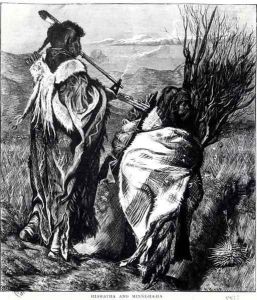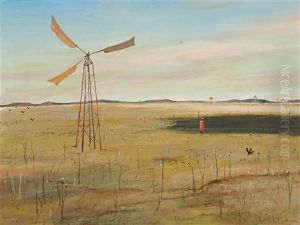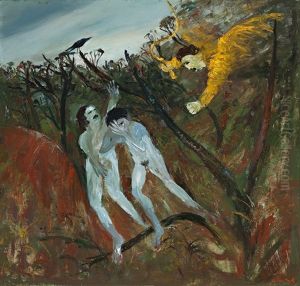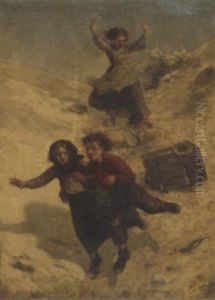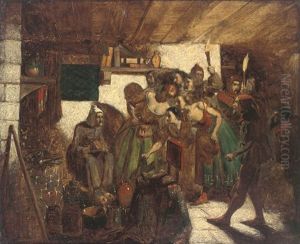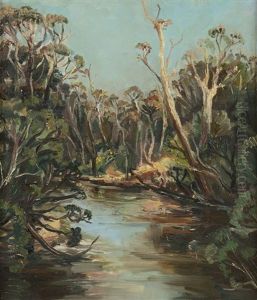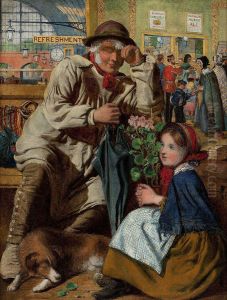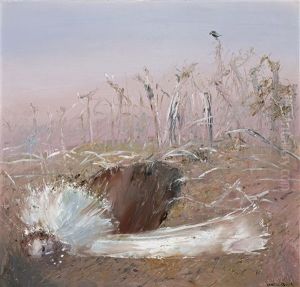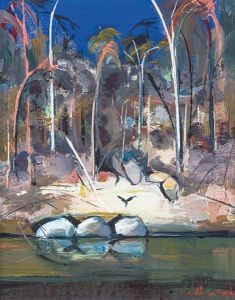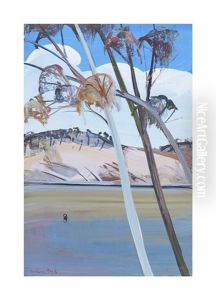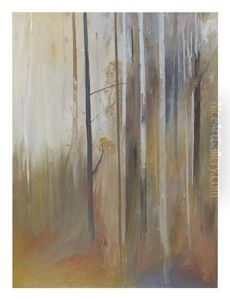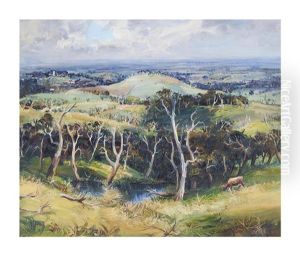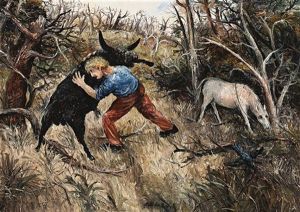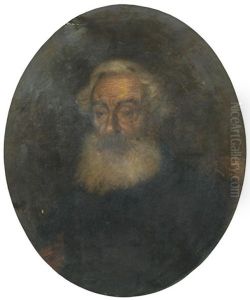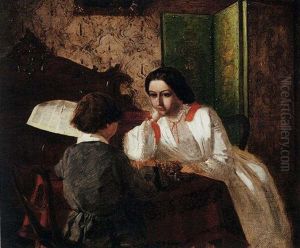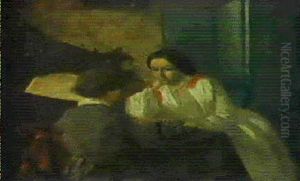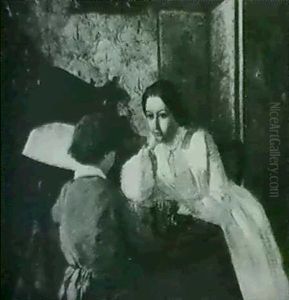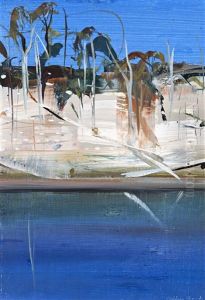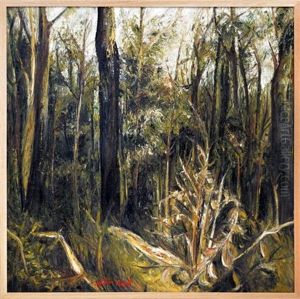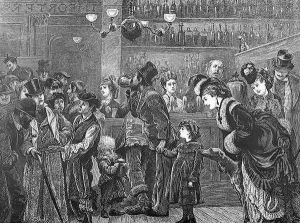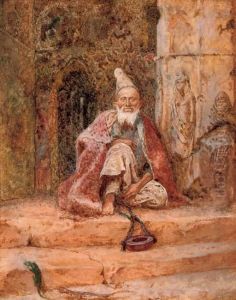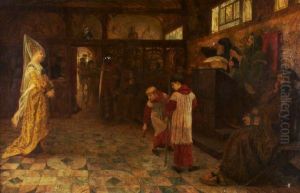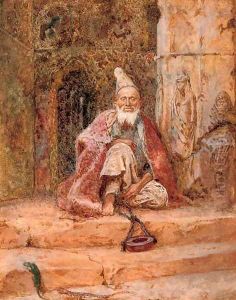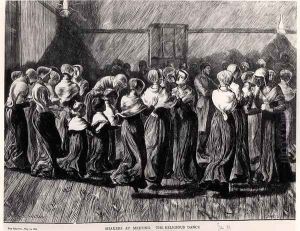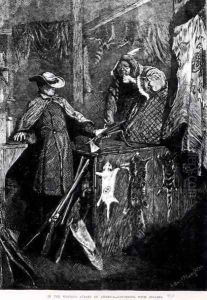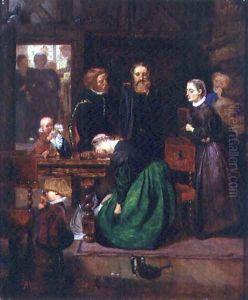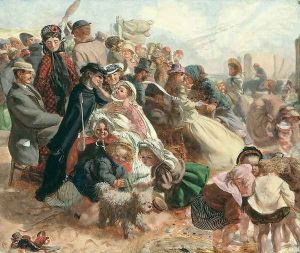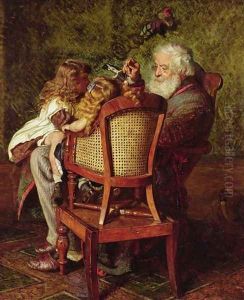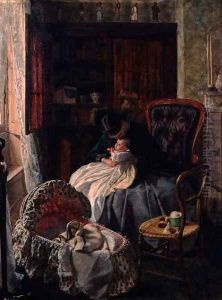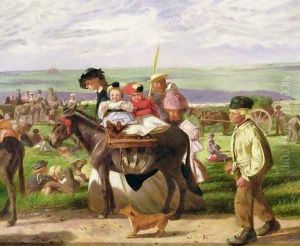Arthur Boyd Houghton Paintings
Arthur Boyd Houghton was a British painter and illustrator, born in 1836 in Kotagiri, Madras Presidency, British India. He was known for his distinctive style that beautifully merged elements of Romanticism with the burgeoning Pre-Raphaelite and Aesthetic movements of his time. His early life was marked by a move to England, where he would eventually study art at the Leigh's Academy and the Royal Academy Schools, developing a passion for both painting and illustration.
Houghton's career was multifaceted; he worked as an illustrator for notable periodicals and books, including works by Charles Dickens and George Eliot, showcasing his ability to capture complex narratives within singular, poignant images. His illustrations were celebrated for their dynamic compositions and emotional depth, qualities that also permeated his paintings. Influenced by his travels in the Middle East and North Africa, Houghton's subject matter varied widely, including genre scenes, historical narratives, and portraits, all imbued with a rich sense of color and detail.
Despite his talent and contributions to the Victorian art scene, Houghton's work was not without its critics. Some contemporaries found his style unconventional, at times overshadowing his achievements. Nevertheless, his illustrations and paintings remain significant for their innovative approach to narrative and form, reflecting the changing tastes and societal norms of the late 19th century.
Tragically, Houghton's life and career were cut short when he died in 1875 at the age of 39. His death marked the loss of a prolific and visionary artist whose work bridged the gap between traditional and emerging art movements of his time. Today, Arthur Boyd Houghton's legacy lives on through his contributions to the world of Victorian art, with his works held in collections and exhibited in galleries around the world, offering insight into the rich tapestry of 19th-century British culture and its artistic expressions.
